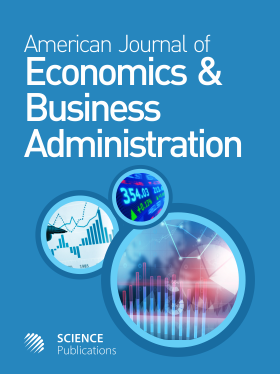Genetically Modified Organism Trade Route and Biosafety-Is It a Failing Synthesis?
- 1 Old NIFT Building, India
Abstract
Problem statement: GM regulations have spawned international conflicting reactions especially between US and EU, with countries requiring food aid caught midway. This article covers the following issues: Whether biotechnology policies of other countries affect the developing countries’ trade in agricultural crops?" Does unregulated GM expansion and contamination, render the system fallacious? Can there be synthesis between trade and environment? Approach: This article also explores "long term effects of trading substitute GM components. Extensive research has been followed to identify the key areas of international trade and environment pertaining to GMO’s which require immediate international attention. Results: The biotech war emerged with the Cartagena Protocol which permits countries to ban unsafe GM products and requires labeling of shipments that threaten traditional crops or biodiversity. In response to stricter stand of EU banning most GMOs, the US initiated litigation before WTO which in a preliminary ruling declared EU restriction violative of trade rules. Fear of export losses discourages Asia to approve new GMOs. U N reports that, Asia’s regulatory framework is flawed and large number of tests, required to approve GMO’s safe release are not conducted causing "irreversible loss of genetic diversity". Governments address these concerns differentially. Countries like Canada, China, and US incorporated GMOs commercially. While EU and Japan wait for full environmental assessment, the EU has issued a Directive on release and commercialization of GM crops. The EU view sharply contrasts to the WTO’s, whose contribution to sustainable development of the environment lies in trade opening in goods and innovations like GM crops. WTO does not accept the process of production as cause for trade restrictions, narrowly interpreting the exception to trade rules under Article XX. International regulations on GMOs, (considered similar to harmful agricultural crops) are undefined. Before NAFTA, corporations are challenging these as "barriers to trade" while Environmentalists are advocating the "precautionary principle". Conclusion/Recommendations: The current climate of controversy in such key aspects across the world complicates the possibility of synthesis of trade and bio safety of GM food. Furthermore, the concept of food aid ensures that GM trade remains prevalent and unchecked. Thus, the answer to the projected environmental damage through such passage and the co-existence of trade laws alongside bio-safety demands an alteration in national as well as WTO legislations. This article attempts to evaluate the possibilities of a legislative make-over and the nuances of environmental safeguards against the proposed problems.
DOI: https://doi.org/10.3844/ajebasp.2009.206.212

- 6,263 Views
- 4,530 Downloads
- 4 Citations
Download
Keywords
- GMO
- trade
- biosafety
- environment
- Cartagena protocol
- WTO
